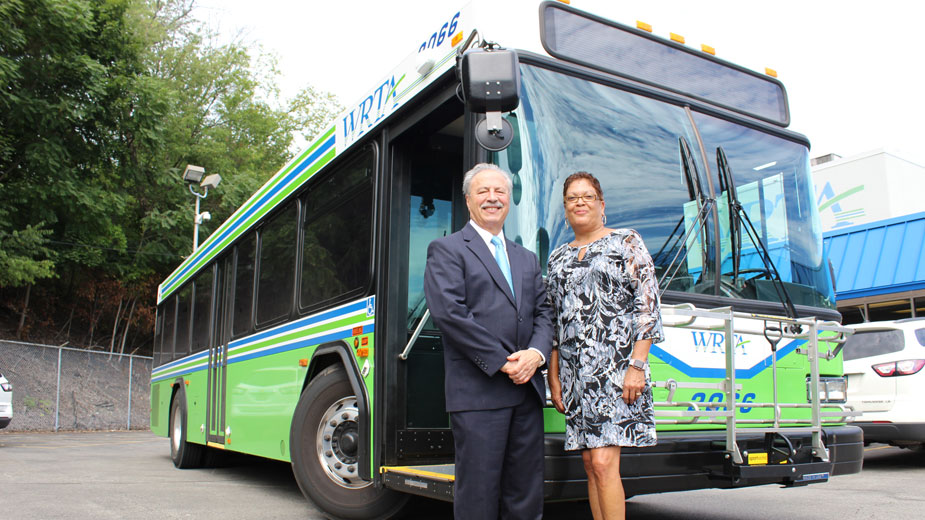WRTA Increases Number of Hourly Bus Runs
YOUNGSTOWN, Ohio — With the arrival of a new fleet of buses, the Western Reserve Transit Authority can fulfill a promise made seven years ago, says Executive Director James Ferraro.
Beginning Sept. 6, all of the bus lines within the authority will offer hourly service, adding 56 trips across Mahoning County on weekdays and doubling service on Saturdays. In total, the WRTA will operate some 360 trips across its 27 routes. The changes will affect 11 routes, all in Youngstown.
“When we went countywide, we made a promise to increase the number of trips and services that we offered all riders,” Ferraro says. “We’ll end up with the kind of service that makes us competitive for a lot of people who are homebound or otherwise can’t get out.”
In 2009, the transit authority expanded to serve all of Mahoning County, last year serving 1.6 million riders.
WRTA has between 5,000 and 6,000 riders daily, Ferraro says, and for many the bus service is their main mode of transportation. By increasing the number of bus runs, riders are provided with more reliability and flexibility in their schedules.
“They need the frequency if they’re shopping or going to the doctor or even looking for work,” Ferraro says. “This is the service you need to be dependable and to be on time.”
It’s not uncommon, adds WRTA director of transportation Judy Rodriguez, for people to have to leave home hours before work to catch a bus so they can arrive at on time. Now, with buses running every hour and half-hour, that will no longer be necessary.
“It means getting people to their jobs more conveniently,” she says. “We want them to be able to get anywhere they need to go without waiting.”
For businesses, the hourly runs should also be a benefit, Ferraro says. Employees who use the WRTA will have more reliable transportation and customers will find it easier to get to and from stores.
Rodriguez says that some shoppers would get on a bus at 9 a.m. and not have a chance to catch a return trip until as late as noon or 1 p.m., something that can be hard to plan around.
“That’s a quality of life factor,” Ferraro says. “More rides more often translates to transit meaning business. People can go to the areas where they can shop, get them to job sites and becoming productive members of society.”
The expansion of services comes as the WRTA finishes upgrading its fleet of buses. Of the 38 buses, 28 have been replaced with newer models and the remaining 10 are on the way, Ferraro reports. Most of the older buses were bought in 2000 and transit agencies must use buses at least 12 years before discontinuing their use, he adds.
“We can’t just go out and get a new one when we have a few extra dollars,” he says. “We were having to spend a lot of money to keep them running. Now, everything’s under warranty and [we have] some new luxuries like bicycle racks.”
The increased number of runs is the third and final phase of the WRTA’s “Revamp and Upgrade Plan, which also included examining customer needs and adjusting services and improving the fleet.
In addition to its bus fleet, WRTA offers 28 smaller vehicles for its Dial-A-Ride service and runs the Penguin Shuttle around the campus of Youngstown State University.
Pictured: Jim Ferraro and Judy Rodriguez.
Copyright 2024 The Business Journal, Youngstown, Ohio.



